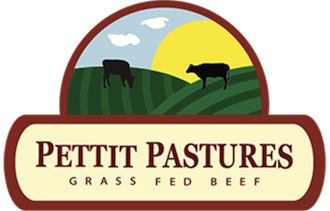April Farm Update
It appears Spring has arrived early on the farm this year. We are not only enjoying the early warmer weather, but we are making good use of the opportunities it brings.
We recently had the option to rent some of our neighbor’s land. We’ve rented about 20 acres of pasture and 12 acres of fields, all of which adjoins our farm property. This is a great opportunity for us as it is not often that adjoining land becomes available for rent; however, getting the extra land ready is making for a busy spring on the farm. All of the pasture land needs perimeter fencing as well as fencing for individual paddocks. All the fields need rock picking, disking, fertilizing, and planting.
This extra land is needed as we expand the size of our herd. The new pasture will allow us to add more cattle and longer rest periods into our grazing rotations. The fields will be planted into alfalfa and grass for haying which will allow us to produce more hay and baleage for the winter months.
Additionally, we are well into our 2016 calving season. As I write this blog, we have 15 calves born. We have 2 calves from our new Aubrac bull as of now. The first Aubrac calf born was from a belted cow. It has a full belt and very light color which is a typical color for pure Aubracs but rarely comes through on cross-bred calves. The second Aubrac calf is much darker, not jet black like an Angus but mostly back with some brown mixed in. We are very excited to see how they grow and if adding the Aubrac bull was a good decision.
[/et_pb_text][/et_pb_column][/et_pb_row][et_pb_row _builder_version=”3.19.3″][et_pb_column type=”1_2″ _builder_version=”3.19.3″ parallax=”off” parallax_method=”on”][et_pb_image align=”center” src=”https://www.pettitpastures.com/wp-content/uploads/2019/01/image-768×576-1.jpeg” _builder_version=”3.19.3″][/et_pb_image][/et_pb_column][et_pb_column type=”1_2″ _builder_version=”3.19.3″ parallax=”off” parallax_method=”on”][et_pb_image align=”center” src=”https://www.pettitpastures.com/wp-content/uploads/2019/01/image-768×576.jpeg” _builder_version=”3.19.3″][/et_pb_image][/et_pb_column][/et_pb_row][et_pb_row _builder_version=”3.19.3″][et_pb_column type=”4_4″ _builder_version=”3.19.3″ parallax=”off” parallax_method=”on”][et_pb_text _builder_version=”3.19.3″]We also picked up our pigs earlier this month. We bought 5 pure bred Berkshires from the same breeder as last year. The pigs were a big hit last year and already all but one are pre sold for this year. If you have never tried Berkshire pork, I strongly urge you to give it a try. Berkshire meat has a darker red color almost like beef and has an excellent flavor. Many gourmet restaurants have it on their menus and it is favored by chefs. If you are interested in our pasture raised Berkshire pork, send an email to Pettitpastures@gmail.com and I can get you the details.[/et_pb_text][/et_pb_column][/et_pb_row][/et_pb_section]
